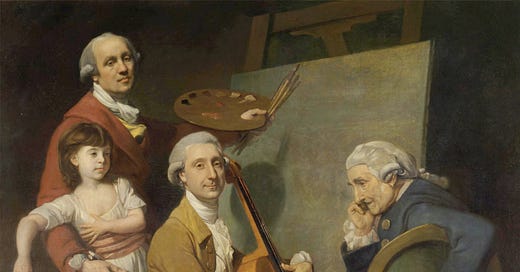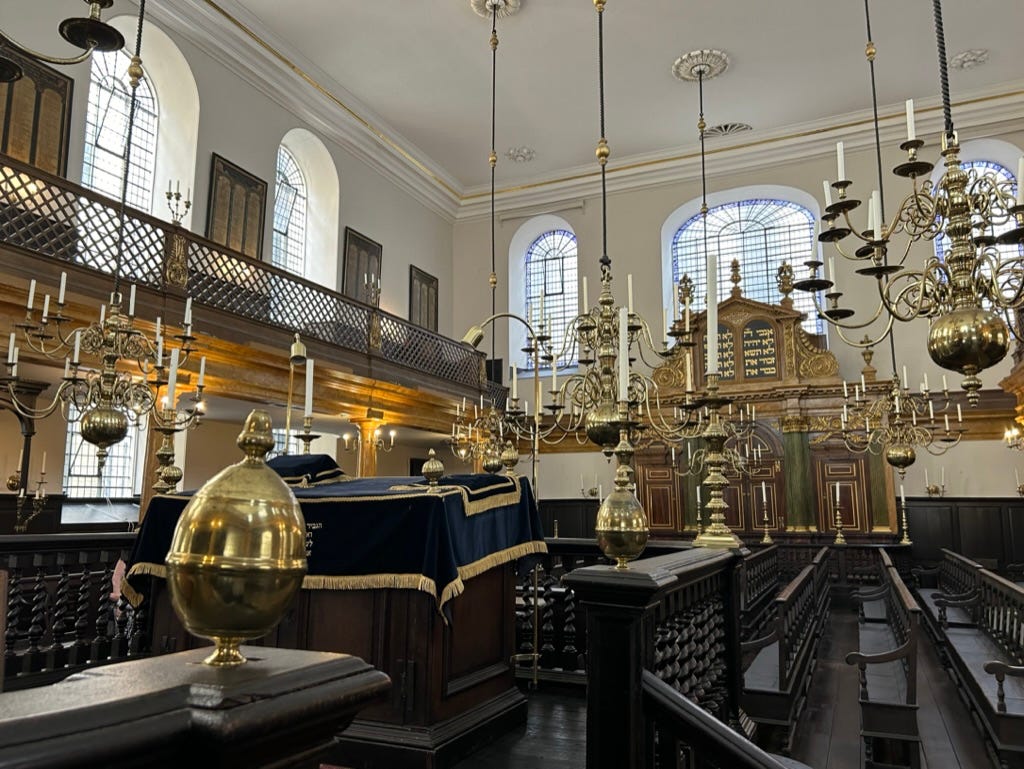London Calling: The Ashkenazi-Sephardi Clash
My new article on Portuguese vs. Ashkenazi Jews in Eighteenth-Century London
This past summer, I led a tour group to visit the beautiful Bevis Marks Synagogue — arguably the oldest continuously-used synagogue building in Europe and the ancestral home to London’s Spanish & Portuguese (“S&P”) Jewish community. Designed in the style of British architect Christopher Wren, who also designed my alma mater, William & Mary, the synagogue is a testament to the majestic traditions which are still upheld by Western Sephardic Jews worldwide, including in Great Britain, France, Holland, Italy, Israel, Iberia, and North America.
But when our walking tour went around the corner to nearby Duke’s Place, I could not help but smile: I was walking down a musically-contested street. This is because the Ashkenazic Jews of London, who established a synagogue there in 1690, had quickly become a cultural (and musical) embarrassment to their nearby Portuguese neighbors. I knew this because I had discovered a pair of eighteenth-century Sephardic polemics making fun of Ashkenazi cantors for their impious and unruly synagogue singing. And they are the subject of my newest academic article: “Who Are These Miserable Jews?”: Text, Translation, and Analysis of a Transnational Cantorial Polemic in Eighteenth-Century London.
Here’s a visual summary of the article:
It’s a clash made in heaven. For the more juicy details, you’ll have to read the article, which sheds new light on the early London Ashkenazi synagogue.
But you should also read the whole journal, which is open source and free online. Edited by my colleagues Rebecca Cypess (Yeshiva University) and Alon Schab (Bar-Ilan University), this latest issue of Min-Ad: Israel Studies in Musicology is a feast for the Jewish music (and early-music) curious reader.
Included in this year’s edition, “New Directions in the Study of Music and European Jewish Culture, ca. 1600-1800” are a variety of fascinating new studies, including:
Europa Rossi: A Question of Identity by Liza Malamut
Sounding the Nação: Aural Conversion and Eighteenth-Century Community Formation at the Amsterdam Sephardic Synagogue by Paul G. Feller-Simmons
Echoes from the Diaspora: Galant Schemata & Style in Sephardic Music of Enlightenment Amsterdam by Jonathan Salamon
Three Shout but Are Not Answered by Avital D. Vovnoboy (Translator)
Who Are These Miserable Jews?”: Text, Translation, and Analysis of a Transnational Cantorial Polemic in Eighteenth-Century London by Matthew Austerklein
The Evolution of Prayer and Song in Early Modern Berlin by Tina Frühauf
The Wandering Jew in the Drawing Room: Harriett Abrams’s Gothic Songbook of 1803 by Rebecca Cypess
and three book reviews of Tonality: An Owner’s Manual (Eytan Agmon); Music, a Connected Art: Die Illusion der absoluten Musik (Julian Rushton); and Transcultural Jazz: Israeli Musicians and Multi-Local Music Making (Rebecca Zola).
Have a great week, and enjoy this new concerto of studies in early modern Jewish music.







I was on my own doing a self-guided, London Pass enabled tour about 12 years ago. Phones had GPS, which I used sparingly then... wandering up and down the street totally baffled until I saw a man wearing a kippah. Yay! He was very nice and showed me the archway, but did say, "there's really a much nicer synagogue in the city". The attendant at Bevis Marks did give me a great little tour and let me wander all around. He also told me about the visit there by Samuel Pepys ... was it Purim or Sukkot?